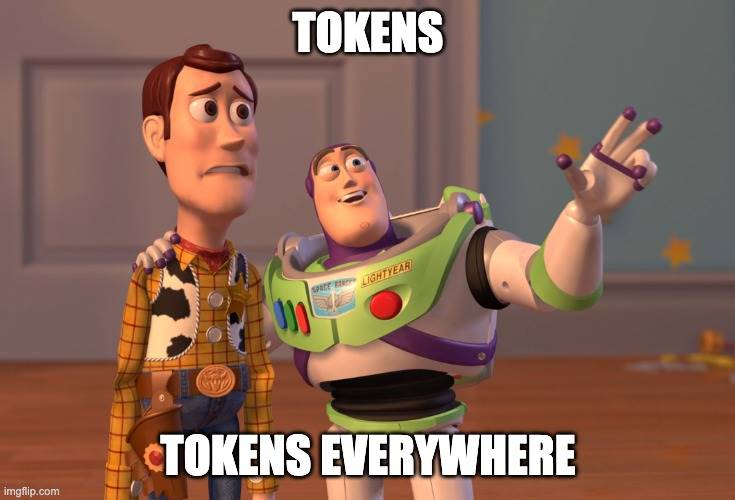Compliant DeFi protocols are expected to achieve rapid growth and attract more institutional participation.
Author: defiprime
Translation: Deep Tide TechFlow
(Some thoughts on macro trends in the ecosystem and community, presented in no particular order)
1. Clarification of the Regulatory Environment
For a long time, DeFi has been in a regulatory gray area, but 2025 may mark a critical turning point with several important regulatory policies potentially coming into effect.
Compliant DeFi protocols are expected to achieve rapid growth and attract more institutional participation, while projects that do not meet regulatory requirements may face greater survival pressure and could gradually exit the market.
2. DeFi and Web3 May Return to the U.S.
The policies of the previous administration forced many Web3 projects and innovations to relocate outside the U.S., with many projects even having to block U.S. users.
However, with the improvement of the policy environment, this trend may reverse. More Web3 projects are expected to lift geographic restrictions and re-enter the U.S. market, re-establishing connections with U.S. users.
3. Stablecoins Will Become the Main Force in Payments
Traditional finance (TradFi) can no longer ignore the rapid rise of stablecoins. Although the widespread adoption of stablecoins by institutions requires more robust tools and infrastructure, which may take time, stablecoins have already shown strong development momentum and are gradually establishing their important position in the global payment and financial ecosystem.
4. The Market May Reach a Cycle Peak in 2025
Financial markets cannot continue to rise indefinitely, and 2025 may become the peak of this cycle, followed by a correction. The key question is: how significant will the market correction be?
As the correlation between Bitcoin and traditional financial markets gradually increases, its price decline may be relatively limited, and it is expected to drop less than traditional financial indices like the S&P 500.
5. Ethereum Will Continue to Explore New Development Narratives
The performance in 2024 indicates that the pace of competition in the blockchain industry is accelerating, and traditional ten-year plans are becoming inadequate for this rapidly changing field. The inefficiency of the Ethereum Foundation (EF) has hindered the overall development speed of Ethereum.
However, it is worth noting that the community's attention to these issues is rising, sparking a lot of positive and in-depth discussions. On social media, this phenomenon is vividly referred to as "Ethereum War Mode," reflecting the community's efforts and debates to promote Ethereum's progress.
(Original text: Evan Van Ness tweet)
6. Token Craze Sweeps Web3
Many early OG Web3 projects are expected to launch their own tokens in 2025, such as the highly anticipated platforms Opensea, Metamask, and Farcaster. Additionally, some emerging popular public chains will also join this wave of token releases.
This may open up an "airdrop season," providing rewards for loyal Web3 users who have remained active over the past few years. But what is more noteworthy is the market performance of these new tokens and their specific roles in shaping the ecosystem.

7. Shift in Focus of Crypto Infrastructure Investment
As most infrastructure projects have completed their layouts, venture capital attention is gradually shifting towards consumer-facing products.
This trend has been emerging since last year, and as the industry matures and user adoption widens, this shift is expected to accelerate in the coming years.
8. Deep Integration of DeFi and AI
The combination of AI technology and on-chain protocols may give rise to a promising field of innovation. From automating complex investment strategies to optimizing interactions with decentralized systems, the introduction of AI will bring more possibilities to DeFi. This trend is expected to become a focal point in the industry next year.
9. New Token Distribution and Fundraising Models
The meme craze of 2024 actually reflects the community's dissatisfaction with the traditional venture capital-supported token models. Past models with high fully diluted valuations (FDV), low circulation, and multiple rounds of financing have gradually become unsuitable for market demands.
In the future, we may see more token distribution and fundraising mechanisms that focus on community consensus and long-term sustainability. These innovations will help projects better collaborate with users while avoiding the pitfalls of traditional models.
10. NFT 2.0: Moving Towards Dynamism and Efficiency
Although the overall development of the NFT market may trend towards stagnation, projects like $PENGU are leading a new direction, transforming from traditional non-fungible assets to a more dynamic and efficient meme market. This shift may inspire other series projects to follow suit.
Additionally, with the anticipated release of the Opensea Token, there may be new vitality injected into the currently sluggish NFT market, pushing the industry back onto a growth track.
免责声明:本文章仅代表作者个人观点,不代表本平台的立场和观点。本文章仅供信息分享,不构成对任何人的任何投资建议。用户与作者之间的任何争议,与本平台无关。如网页中刊载的文章或图片涉及侵权,请提供相关的权利证明和身份证明发送邮件到support@aicoin.com,本平台相关工作人员将会进行核查。



